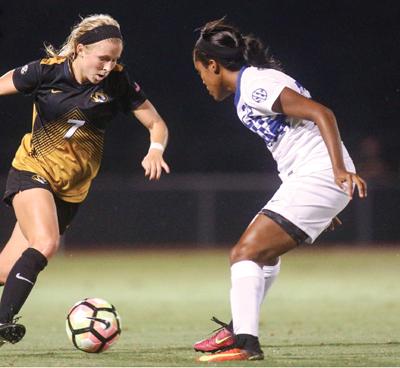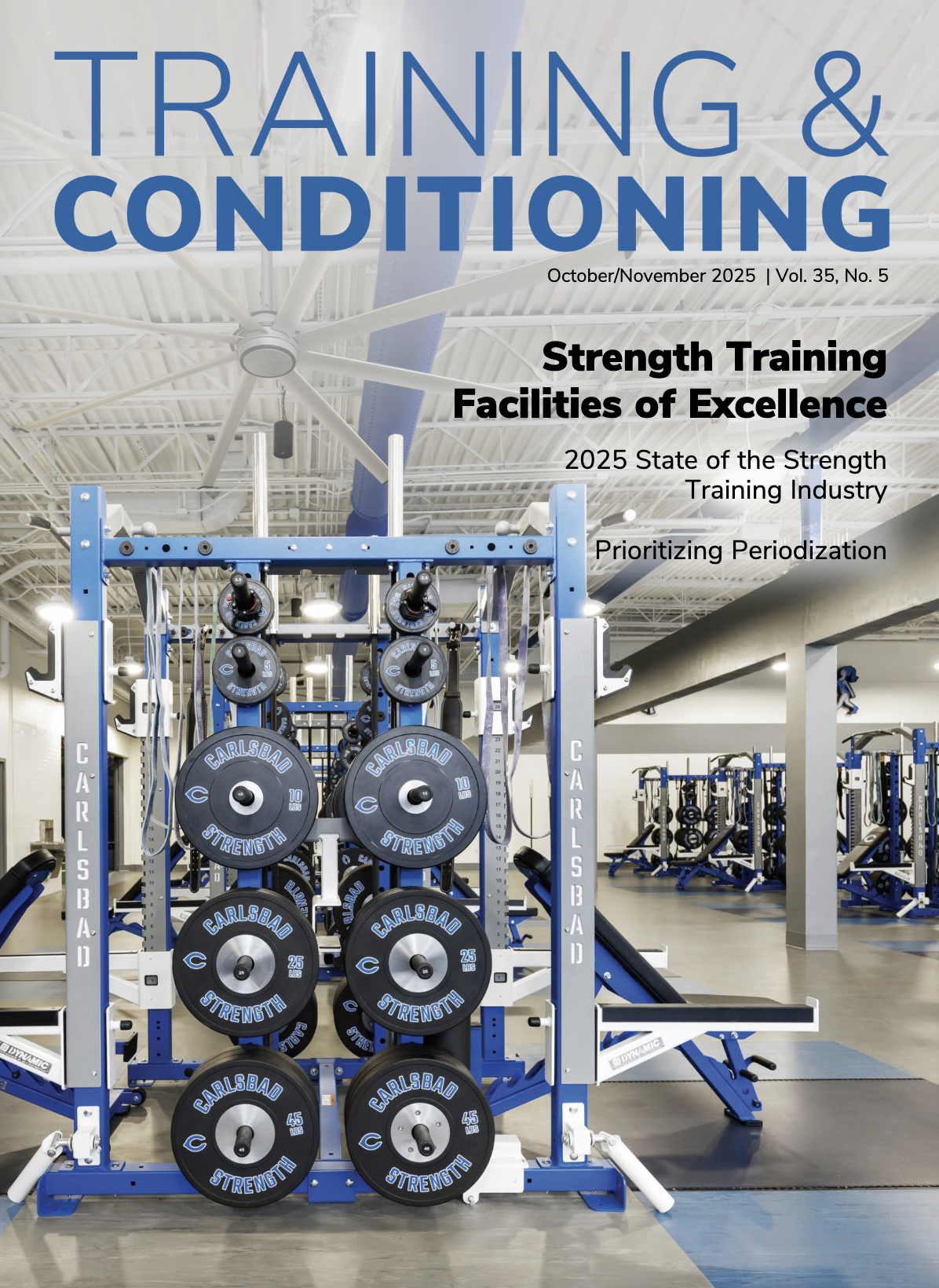Nov 3, 2017Understanding APRE, Part 1
For decades, athletes in weightrooms have been hammering out exercises in a familiar protocol: the ever popular three sets of 10. It’s a seemingly ingrained aspect of strength training, as common as dumbbells and squat racks. However, a different protocol called Autoregulatory Progressive Resistance Exercise (APRE) has been gaining popularity due to its flexibility and results, and it turns the old three sets of 10 model on its head.
There are three basic APRE protocols. The APRE 10 is utilized for hypertrophy, the APRE 6 is utilized for base strength, and the APRE 3 is utilized for absolute strength or power.
As you can see from “Figure 1” below, all of the APRE protocols have the same basic progressions. There are two scheduled warm-up sets (sets one and two) and then two work sets (sets three and four). The first set starts with a load of 50 percent of the given RM (10RM, 6RM, or 3RM), the second uses 75 percent of the given RM, and the third requires the given RM for a max number of reps. Set four uses an adjusted load based off of the number of reps completed in set three. This new load is determined by consulting “Figure 2” below. For example, performing six repetitions in set three for the APRE 10 routine would lead to a decreased load of five to 10 pounds for set four.

Figure 1:
| APRE 10 | APRE 6 | APRE 3 | ||||
| SET | REPS | LOAD | REPS | LOAD | REPS | LOAD |
| 1 | 12x | 50% of 10RM | 10x | 50% of 6RM | 6x | 50% of 3RM |
| 2 | 10x | 75% of 10RM | 6x | 75% of 6RM | 3x | 75% of 3RM |
| 3 | Max | 10RM | Max | 6RM | Max | 3RM |
| 4 | Max | Adjusted weight | Max | Adjusted weight | Max | Adjusted weight |
| 10RM=75% of 1RM | 6RM=83% of 1RM | 3RM=92% of 1RM |
Figure 2:
| APRE 10 | APRE 6 | APRE 3 | |||
| REPS | ADJUSTMENT | REPS | ADJUSTMENT | REPS | ADJUSTMENT |
| 4 to 6 | – 5 to 10 lbs | 0 to 2 | – 5 to 10 lbs | 1 to 2 | – 5 to 10 lbs |
| 7 to 8 | – 0 to 5 lbs | 3 to 4 | – 0 to 5 lbs | 3 to 4 | No change |
| 9 to 11 | No change | 5 to 7 | No change | 5 to 6 | + 5 to 10 lbs |
| 12 to 16 | + 5 to 10 lbs | 8 to 12 | + 5 to 10 lbs | 7+ | + 10 to 15 lbs |
| 17+ | + 10 to 15 lbs | 13+ | + 10 to 15 lbs |
Then, the number of repetitions in set four determines the starting weight for the subsequent training session. This also goes off of the adjustment chart shown in Figure 2. For example, if an athlete does 13 repetitions in set four of the APRE 6 routine, they would increase the starting load 10 to 15 pounds for their next workout. This load becomes the new RM, and the athlete would use 50 percent of this weight for set one, 75 percent for set two, and so on.
So far I’ve covered the standard protocol for APRE, but the warm-up sets can be tweaked. I have never followed the prescribed weights for the initial first and second sets. Rather, I choose a load that allows all athletes to achieve the repetitions with no risk of injury. I do this for three reasons: form perfection, volume accumulation, and psychological momentum.
Form needs to be addressed and improved to acceptable levels in the early stages of APRE before heavy loads are used. If an athlete lifts too much weight too soon and with poor form, it sets them up for injury in future sessions.
Going along with that, technical failure is a big component to APRE. This means that the athlete should stop a given exercise following any deviation from proper technique. Not only does this keep the athlete from hurting themselves with incorrect form, but it also allows us to ensure exercises transfer appropriately to athletic activity. For instance, if you allow an athlete to continue performing squats long after their form breaks down, you prevent them from reaping the true benefits of the exercise in their sport. Plus, they would face increased injury risk with poor technique.
Volume accumulations are a part of all periodization styles. Simply going with a lower load in the beginning of an APRE protocol encourages a higher volume and thus higher volume accumulation during the initial phases. This aids in form improvement and sets the stage for larger strength gains later on in training.
Psychological momentum refers to an athlete becoming accustomed to achieving enough repetitions to move up in weight each workout or even each set. Starting APRE with lower loads allows for this. Once the athlete gets used to completing high repetitions no matter the weight, they are more apt to push through heavier sets in the future. This is essential for beginner and intermediate athletes, as they need overall muscular development.
Next week, we’ll cover how to put theory into practice.


